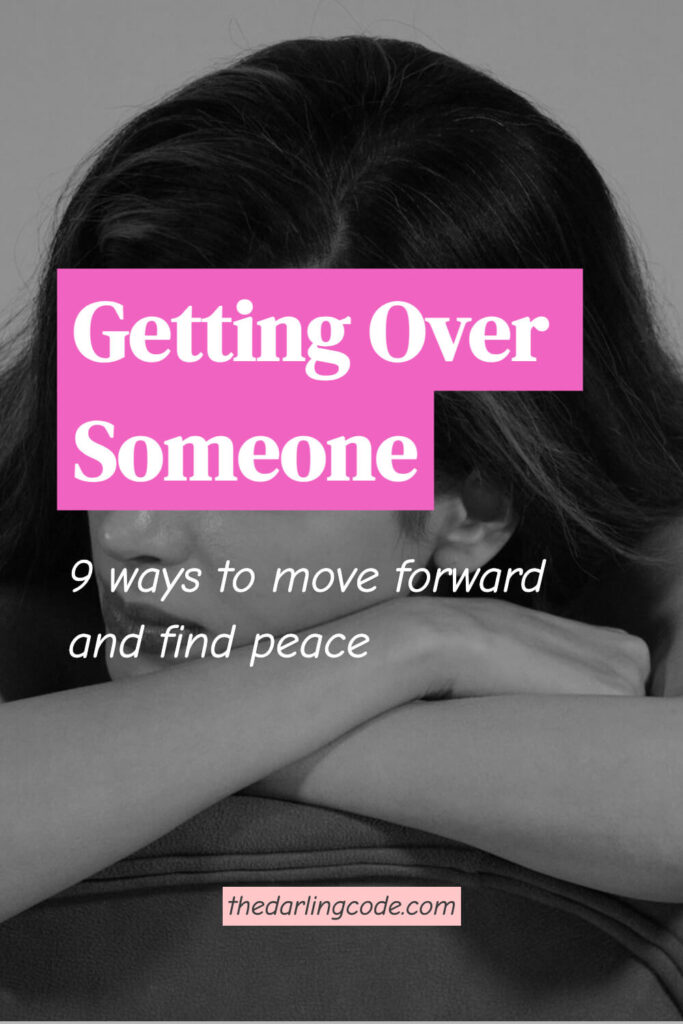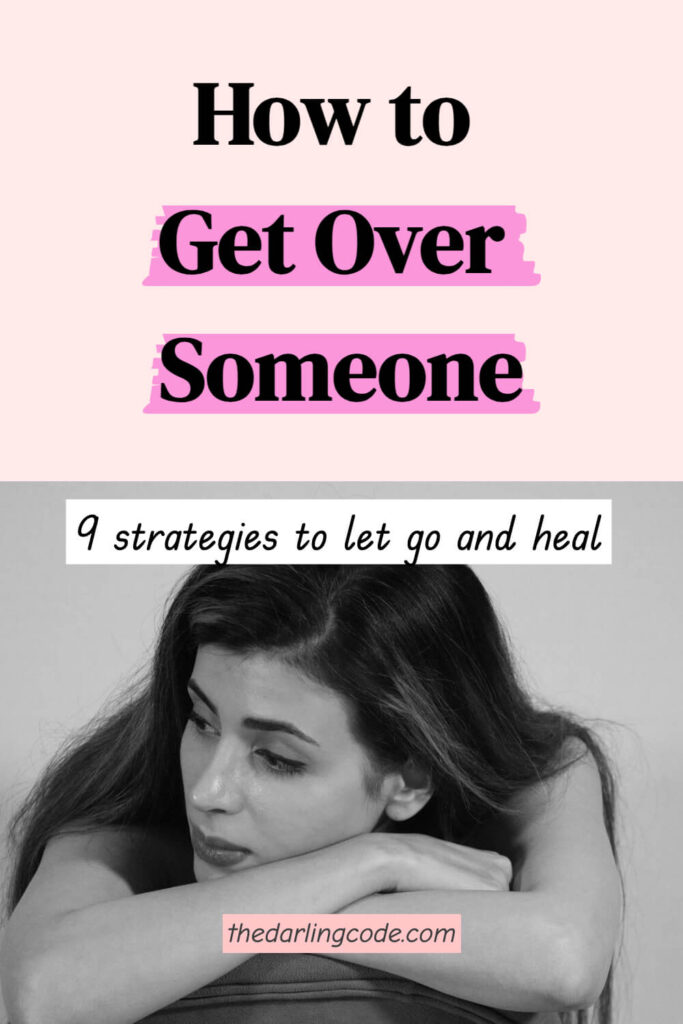How to Move On: 9 Gentle Steps to Getting Over Someone and Finding Peace
The experiences shared in this article are based on real emotional journeys, but all personal details are anonymized and used with the explicit written permission of the clients. Any resemblance to actual persons, living or dead, is purely coincidental. We are committed to treating all client stories with the utmost confidentiality and respect.
The Maple Leaf Moment
Last October, I volunteered at a community garden in my neighborhood.
A woman in her late twenties, let’s call her Mara, knelt beside me planting tulip bulbs. Her hands trembled as she admitted, “I can’t even delete his number. It feels like… deleting a part of myself.”
I handed her a gardening trowel and said, “Maybe start with something simpler. Like unfollowing his cousin’s dog on Instagram.”
She snorted, then paused: “Why does that feel like a betrayal?”
Her question stuck with me.
As a relationship coach for over a decade, I’ve heard versions of this struggle—where leaving behind a person, a hope, or even a fantasy of love feels like abandoning who we once were.
This article isn’t about “moving on” in 30 days. It’s about moving forward while holding your dignity, curiosity, and self-trust intact.
Save this article for later—Pin it to Pinterest and come back when you need it! 📌

1. Let Yourself Grieve the “What Ifs” (Even If It Feels Silly)
Practical Strategy: The 15-Minute Permission Slip
A client once tearfully confessed she’d drafted wedding vows for someone she’d only dated three months.
“I feel like a failure for imagining a life that never existed,” she said.
Here’s what we did:
- Set a timer for 15 minutes daily to journal/walk/cry about the loss—no judgment.
- After the timer stops, transition with a tangible action: Brew tea. Text a friend. Fold laundry.
Why it works: Emotional purging isn’t weakness—it’s neurological housekeeping.
Studies show structured grieving prevents emotions from hijacking your day.
My slip-up: Years ago, I obsessively watched Pride and Prejudice edits on YouTube after a breakup. Only later did I realize: I wasn’t missing him—I missed feeling chosen.
Deeper Dive:
Grief isn’t just about losing a person—it’s about losing the future you envisioned.
A study found that our brains process imagined futures similarly to real memories. So when a relationship ends, you’re not just mourning the past; you’re detoxing from a neural habit.
Try this twist: Write a “Goodbye Letter to the What-Ifs.”
Address it to the version of yourself that believed in that future.
One client buried hers in a mason jar under her rosemary plant (she called it her “hope compost”).
Another read hers aloud at a karaoke bar—to the tune of I Will Survive.
2. Redesign Your Physical Space (No, Not Just Burning Photos)
Subtle Reset: The “Out of Sight, Out of Emotional Reach” Rule
Delete their favorite playlist from your Spotify? Too direct.
Start with:
- Move objects tied to memories: That coffee mug they gifted? Place it in a high shelf for now.
- Introduce one new sensory cue: A lavender-scented candle. A playlist of songs they’d hate (rebel polka, anyone?).
A client redecorated her bedroom with thrifted velvet pillows she called her “anti-sadness force field.” “Now when I cry,” she joked, “at least I’m crying on something fancy.”
Case Study: The Power of Negative Space
When Lisa couldn’t bring herself to remove her ex’s guitar from her living room, we worked on recontextualizing it.
She hung fairy lights around it and placed a plant on top. “It’s still there,” she said, “but now it’s part of my story, not ours.”
Pro Tip: If you live in a studio apartment, try the “zone method.”
Assign areas for specific emotions: A reading nook for calm, a corner for venting into pillows, a windowsill for hope (literally—place objects symbolizing new beginnings there).
3. Reclaim “Our” Places (Without Avoiding Your Favorite Coffee Shop)
Case Study: The Diner Strategy
Jen avoided her neighborhood diner for months post-breakup—it’s where they’d shared pancakes every Sunday.
Our solution:
- Bring a “buffer buddy” (her sister) for the first visit.
- Order something they’d never eat (blueberry pancakes with extra bacon instead of his usual oatmeal).
- Stay 20 minutes longer than the memory lasted.
By month three, she told me, “Now when I smell maple syrup, I just think about my sister’s terrible dating stories.”
Expanding the Strategy:
- For nature spots: Hike the same trail but take a different path halfway. Collect rocks/leaves to create a “new memories” jar.
- For shared friend groups: Host a game night with a twist—play Cards Against Humanity but add inside jokes they wouldn’t get.
Cultural Anchor: Think about Thanksgiving traditions. You don’t cancel the holiday because someone’s missing—you reinvent the menu.
One client started making “breakup stuffing” with jalapeños and dark chocolate. “It’s terrible,” she laughed, “but it’s mine.”
4. When “No Contact” Feels Impossible: The Flexible Boundary System
For coworkers, co-parents, or someone ingrained in your life:
- Silence notifications from 8 PM–8 AM.
- Use a “business only” template for necessary messages: Quick question about [specific task]. No need to reply tonight!
Pro tip: One client wrote emails she never sent, ending with: This is me trying to care less. It’s exhausting and brave.
Real-Life Scenarios:
- Co-parenting: Use a parenting app like OurFamilyWizard to keep communication logistical. Add a ritual afterward—e.g., blast Truth Hurts while driving home.
- Workplace ex: Create a “professional persona” for interactions. Imagine you’re an actor playing “Competent Colleague Who Definitely Didn’t Cry in the Supply Closet.”
My Experience: Early in my career, I had to collaborate with an ex on a project. I wore a specific necklace during meetings—a tangible reminder that I was there as a professional, not a former partner.
5. Rewire Your Self-Narrative: From “Left Behind” to “Curious Explorer”
Exercise: The “Third-Date Test”
Ask yourself: If I met this person today, knowing what I know now, would I go past a third date?
Sam, 34, realized: “He canceled plans last minute six times. If this were a new guy, I’d have unmatched by week two.”
Advanced Reframing:
- Write a Yelp review for the relationship: “One star. Ambiance was initially great, but service became inconsistent. Would not recommend.”
- Create a “red flag” bingo card: Every time you remember a warning sign you ignored, mark a square. When you “win,” treat yourself to tacos.
Psychological Hack: Researchers found that third-person self-talk (“Why is Sam feeling this way?”) creates emotional distance.
Try narrating your story like a documentary voiceover: “And here we see a resilient human, learning to prioritize her peace…”
6. Identify the Sticky Threads (Hint: It’s Not Just About Them)
Uncomfortable Truth: Sometimes we cling to people who mirror our unhealed wounds.
Maybe you miss:
- Their chaotic energy distracting you from your career doubts
- How their criticism justified your perfectionism
A client admitted, “I kept reminiscing about his ‘passion’—but really, I just missed feeling needed when he’d call during panic attacks.”
Journal Prompt:
What did this relationship help me avoid feeling about myself?
Example:
- “When we fought about his lateness, I didn’t have to think about my fear of being alone.”
- “His jealousy made me feel desirable, which distracted me from hating my body.”
Action Step: For every sticky thread, create a “substitute nurturer.”
If you miss feeling needed, volunteer at an animal shelter.
If you miss passion, take a salsa class.
7. Build a “What’s Actually Mine” List
Grab a notebook. Write down every non-negotiable trait this experience revealed you crave.
Example:
- “I need someone who remembers my allergy to cashews without reminders”
- “Sunday afternoons are for parallel reading, not marathon texting”
One reader told me her list included: “Must think my laugh is iconic, not ‘too loud.’”
Upgrade the List:
- Add sensory details: “Wants to visit bookstores and notice which sections I linger in.”
- Include deal-breakers with humor: “If they unironically use ‘Live, Laugh, Love’ decor, swipe left.”
Client Story: After her divorce, Emily framed her list as a “User Manual for Loving Me” and hung it by her mirror. “It’s not about being picky,” she said. “It’s about being clear.”
8. Create a “Growth Resume” (Yes, Seriously)
Track progress in measurable snippets:
- Went 48 hours without checking their LinkedIn
- Told Sara NO when she tried to update me about them
My story: Post-college breakup, I bragged about teaching myself to replace his bike tire repair skills. Still useless at cycling, but the pride was real.
Make It Visual:
- Sticker chart: Yes, like kindergarten. Every week without contact = a gold star.
- Playlist milestones: Create a “Progress Banger” playlist. Add a new song for every small win (e.g., Survivor by Destiny’s Child after deleting their number).
Pro Tip: Share your resume with a trusted friend. One client’s bestie mailed her a “Promotion Certificate” when she hit six months of growth.
9. Plan a “Friendiversary”
Schedule a monthly check-in with a compassionate friend to discuss:
- One way you’ve surprised yourself
- One lingering ache needing validation (not solutions)
A group I coach exchanges voice notes saying, “Remember when you thought you’d never ______? Look at you now, you messy masterpiece.”
How to Structure It:
- Set the tone: “This isn’t a vent session—it’s a celebration of how far you’ve come.”
- Use props: Light a candle for “what’s healed,” pour sparkling cider for “what’s growing.”
- End with a mantra: “I am someone who ______.” (Example: “I am someone who prioritizes peace over potential.”)
Cultural Twist: Borrow from birthday traditions. Bake mini cupcakes labeled with your progress (“1 Month of Not Settling” flavored).
Final Words from The Darling Code
Healing isn’t linear—it’s more like untangling Christmas lights in July.
Be generous with what you need today.
Maybe it’s deleting their sister’s Instagram.
Maybe it’s eating ice cream for breakfast.
Start here: Pick one item from section 2 (redesigning space) or section 8 (Growth Resume). Email yourself one victory at bedtime.
With heart,
The Darling Code
PS: Save this to your Pinterest “Adulting SOS” board? Then try today’s tiny win: Text a friend, “Remember that time I ______? Wow, we’ve come far.” Let nostalgia work for you.
Got value from this article? Pin it to Pinterest for easy reference and help others discover it! 🌟


ABOUT THE AUTHOR
Carsey, Founder, Editor-in-Chief & Relationship Coach
Carsey is the heart and mind behind this space. As a Relationship Coach and Editor-in-Chief, she blends practical advice with storytelling to help you navigate love, connection, and everything in between.






